
- Home
- Stud Dogs
Some of our most popular Stud Dog Breeds:
- Puppy Litters
- Dog Services
- Dog Breed Profiles
- Blog
- Contact Us
Cavalier King Charles Spaniel Breed Profile
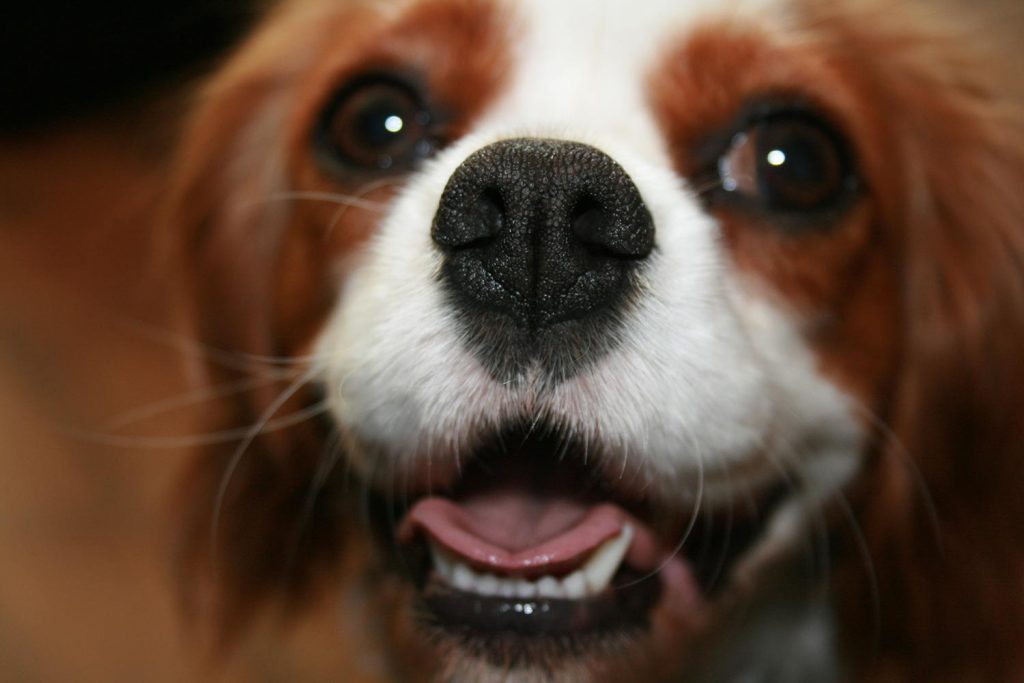
With its cute, friendly appearance, small size and loving nature, the Cavalier King Charles Spaniel is a very popular companion dog. These dogs are always eager to play, making them fantastic family pets who get along well with children, whilst their affectionate personality and undemanding needs make them perfect pals for the more active elderly.
The Cavalier King Charles Spaniel is not to be confused with the very similar King Charles Spaniel. Whilst the Cavalier King Charles Spaniel is a slightly larger dog with a longer muzzle, flatter head and high set ears, the King Charles Spaniel has a flatter muzzle, slightly upturned nose, wide set eyes and domed head.
Typical Cavalier King Charles Spaniel Facts:
Height: 11-13in (30-33cm)
Weight: 12-18lb (5.5-8kg)
Average Litter Size: 6
Life Expectancy: 12-15 years
Good with Children: Yes
Kennel Club Classification: Toy
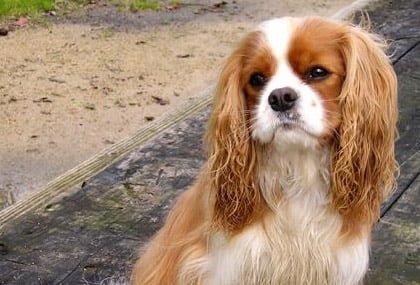
Colour of a Cavalier King Charles Spaniel
There are four recognised colours: Blenheim (chestnut and white), tricolour (white with black and tan markings), black and tan, or ruby (reddish-brown coat with no markings).
Grooming a Cavalier King Charles Spaniel
These spaniels have silky soft, wavy coats with feathering on the ears, legs, feet, chest, and tail. This breed sheds all year round, but with a good diet and frequent grooming, their shedding can be minimised. Thorough grooming weekly, or briefer grooming sessions every few days, will keep a Cavalier King Charles Spaniel’s coat in top condition. Owners should pay particular attention to the ears, cleaning them and checking for matts, which must be removed with gentle combing. The fur between the pads on the feet should also be trimmed regularly.
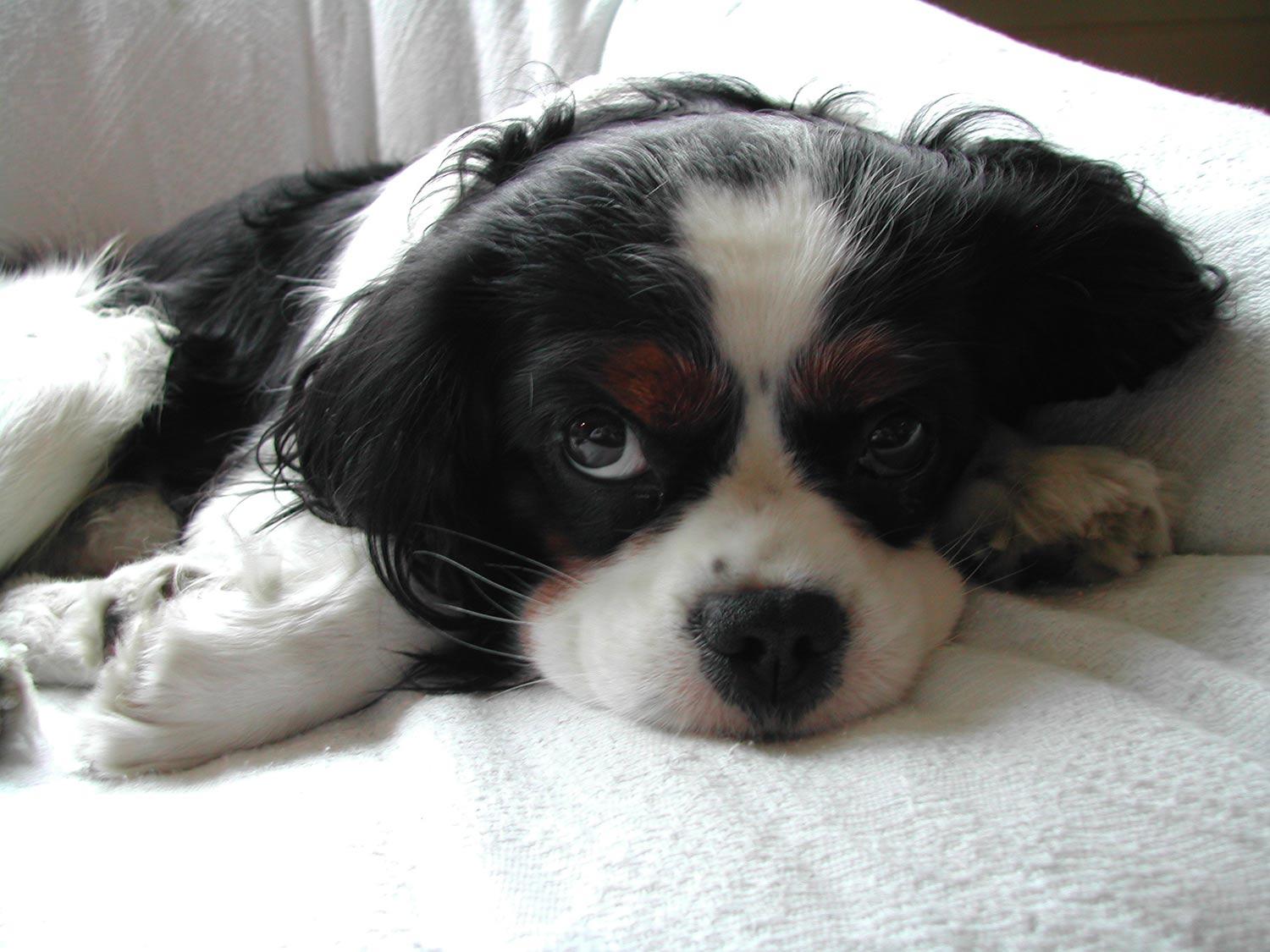
Cavalier King Charles Spaniel Common Ailments/Health Issues
Mitral Valve Disease (MVD) is a heart condition that affects almost all Cavalier King Charles Spaniels by the time they reach old age, so owners must be aware of the disease and treat it as early as possible. As MVD is hereditary, it is important to buy puppies from breeders that follow veterinary advice to selectively breed dogs to minimise risk of MVD.
Owners should also be aware of Syringomyelia, a condition affecting the brain and spine that causes symptoms ranging from mild discomfort to severe pain and even partial paralysis. Sensitivity around the neck or shoulder or dogs attempting to scratch these areas are early signs of this condition. Dogs should be diagnosed as early as possible to facilitate effective treatment.
These dogs can also be affected by hip dysplasia, in which abnormal structure of the hip joints and surrounding tissues causes pain and stiffness. However, dogs with hip dysplasia are usually able to lead normal, healthy lives.
Temperament of the Cavalier King Charles Spaniel
Cavalier King Charles Spaniels are emotionally intelligent, cuddly and affectionate dogs, making them fantastic companions. For these reasons they are also successful as therapy dogs for mental health support. These dogs are equally happy running outdoors or sitting on their owner’s lap, receiving plenty of love and attention. Being so sociable, Cavalier King Charles Spaniels hate being left alone, so would be best suited to someone who is able to spend plenty of time with their pet.

Training a Cavalier King Charles Spaniel
Thanks to their friendly nature, Cavalier King Charles Spaniels are quick to trust people. This, coupled with their intelligence, makes them easy and enjoyable to train. Whilst they are puppies, it is important to get them accustomed to grooming so it can remain an enjoyable bonding experience for both dog and owner.
Exercise for a Cavalier King Charles Spaniel
Despite being classified as a toy dog, Cavalier King Charles Spaniels are one of the largest in this category and are often just as athletic as other sporting breeds. Each individual dog will vary in its exercise needs and preferences, but will adapt to the level of exercise that suits its owner. This breed of spaniel tends to prefer at least an hour of exercise per day, and whilst they enjoy taking part in dog sports and agility, they are also content curled up at home. Owners should ensure their Cavalier King Charles Spaniel gets enough exercise to avoid weight gain, which can become a health issue for these dogs.
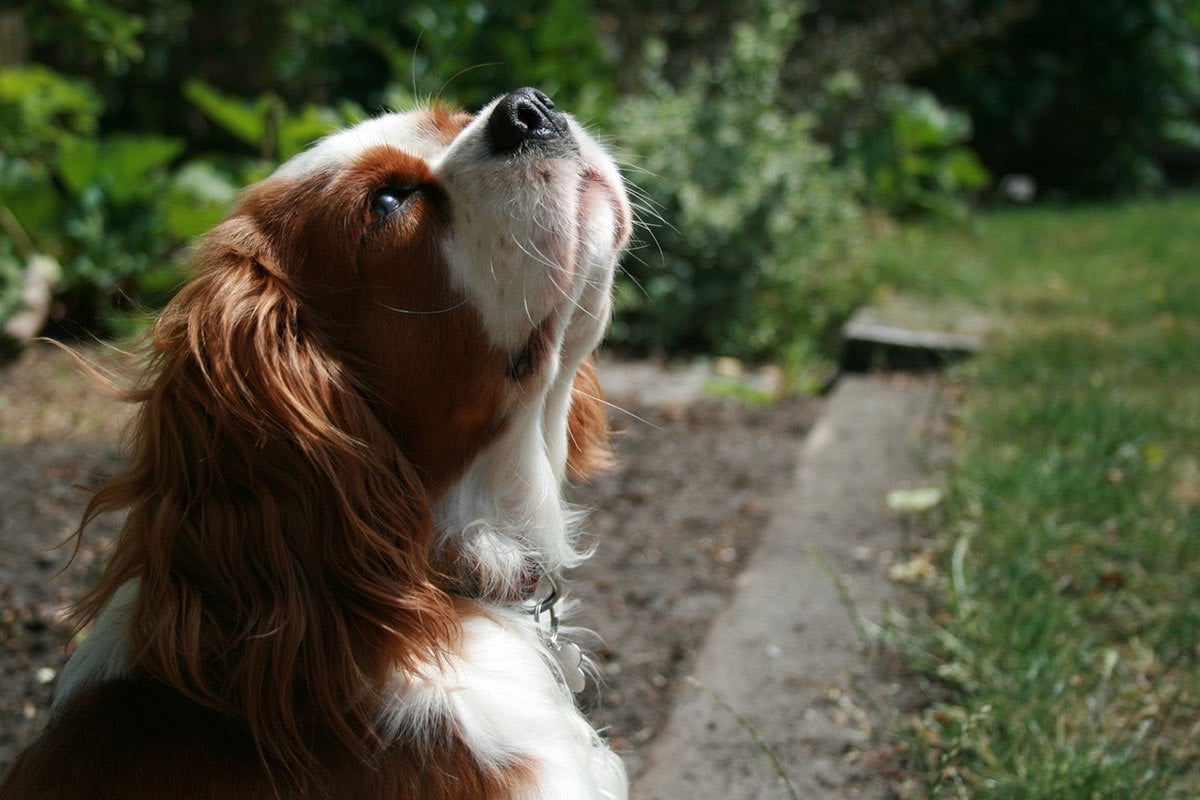
History of the Cavalier King Charles Spaniel
Although the Cavalier King Charles Spaniel is a relatively new breed, its ancestors date back hundreds of years. Cavalier King Charles Spaniels are descended from small Toy Spaniels depicted in famous artworks from as early as the 16th century, where they featured alongside royal and noble families.
At this time, Cavalier King Charles Spaniels were used as ladies’ companions, sitting on their laps and keeping their hands warm. These spaniels had relatively long muzzles, flat heads and high-set ears, and were the favourite companion of Queen Mary, Queen of Scots, as well as her grandson and great grandson, King Charles I and II, who gave their name to the breed.
It is said that King Charles II was inseparable from his spaniels, and never went anywhere without two or three of them. After the death of Charles II, these particular dogs became less popular, with flatter-faced breeds becoming the new royal favourites. Toy Spaniels were bred with these flatter-faced breeds, altering their appearance. Despite this, some chestnut and white Toy Spaniels that retained the classic longer-nosed appearance could still be found at Blenheim Palace, where they continued to be bred by the Duke of Marlborough, giving the chestnut and white coloration the name ‘Blenheim’ today.
By the mid 1800s, this specific spaniel was almost extinct, with breeders agreeing on the contrasting characteristics of a flatter face, domed head and large, wide set eyes as the defining features of the King Charles Spaniel. However, in the 1920s, Roswell Eldridge began searching for spaniels resembling those in the old paintings. He offered large rewards for Crufts entrants matching this appearance, eventually resulting in a dog named ‘Ann’s Son’, who displayed all the classic characteristics of the original Toy Spaniel, being found in 1928.
This sparked interest in dogs with this specific appearance and a breed club was formed, who compiled a written description of how dogs of this breed should look. It was not until 1945 that the Kennel Club granted the Cavalier King Charles Spaniel recognition as a separate breed.
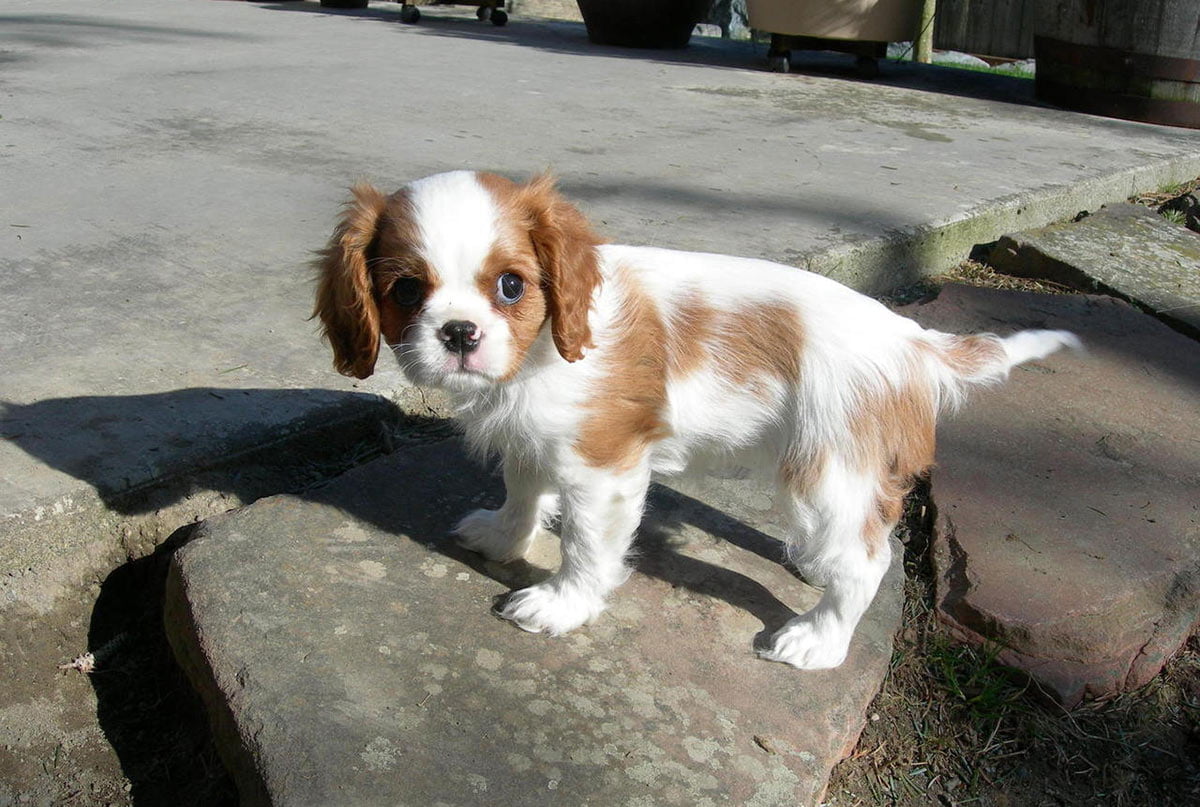
Cavalier King Charles Spaniel Listings
A dog owner since the early 80s, after convincing his parents to buy a Yorkshire terrier named Sadie, Darren created Dream Dogs so dog owners could find the best dog related information on the Internet.